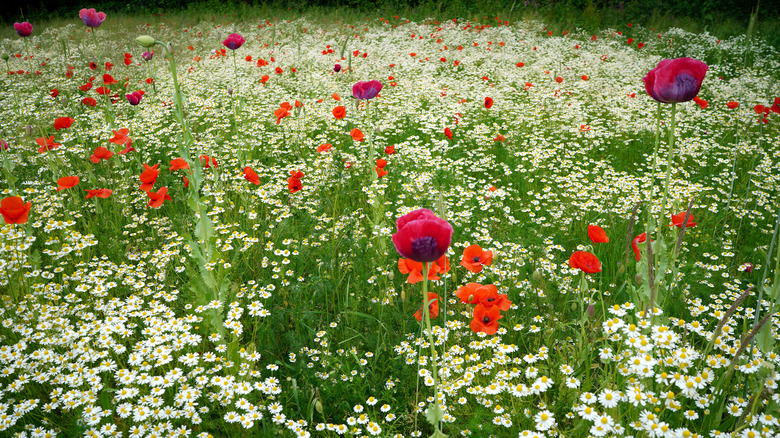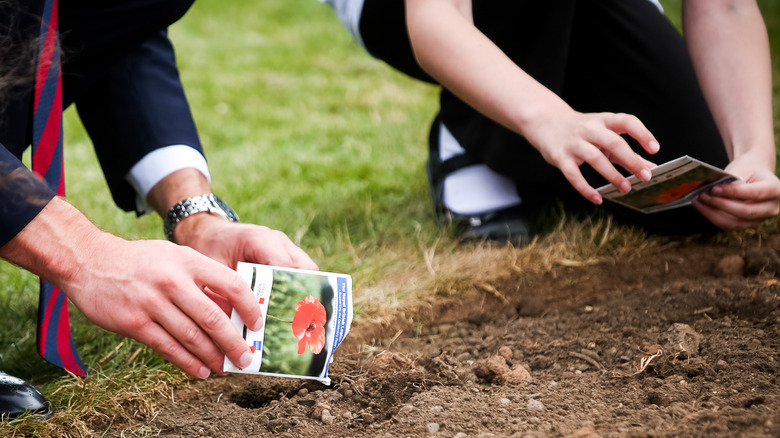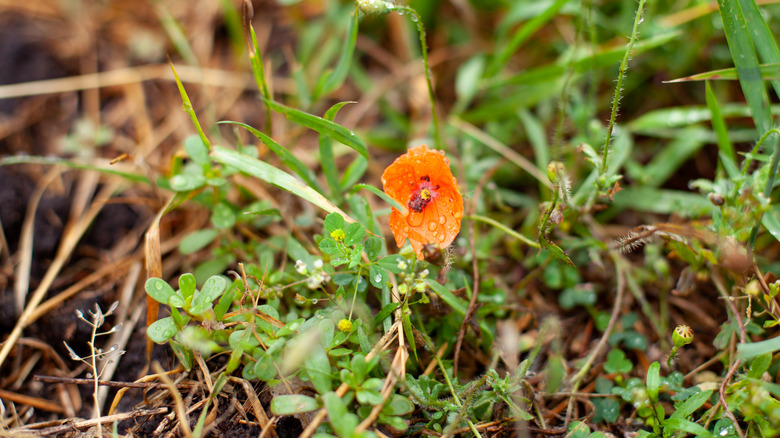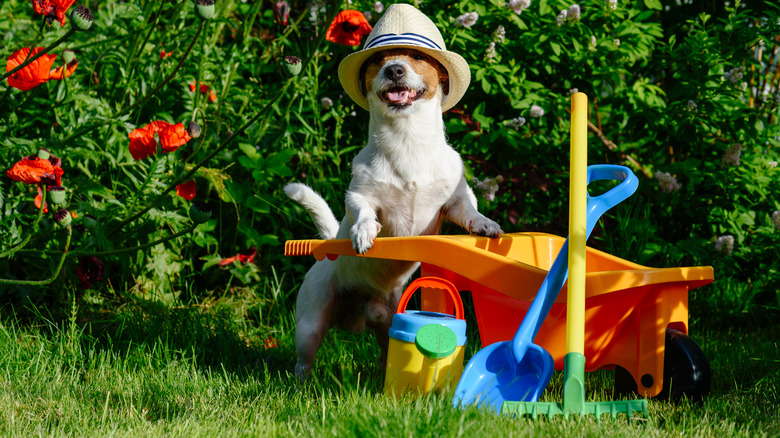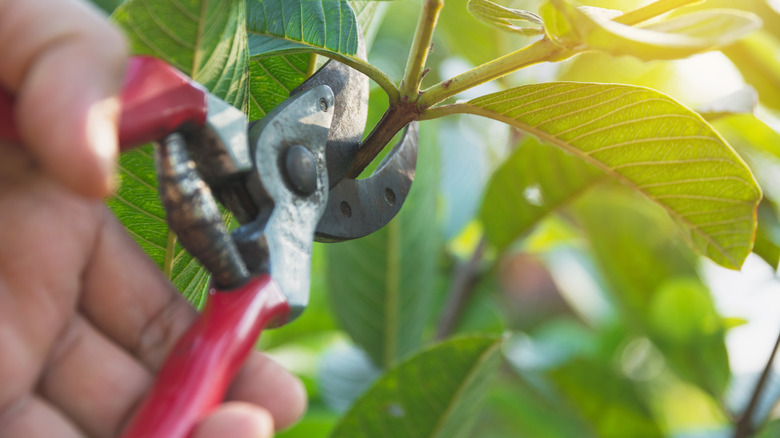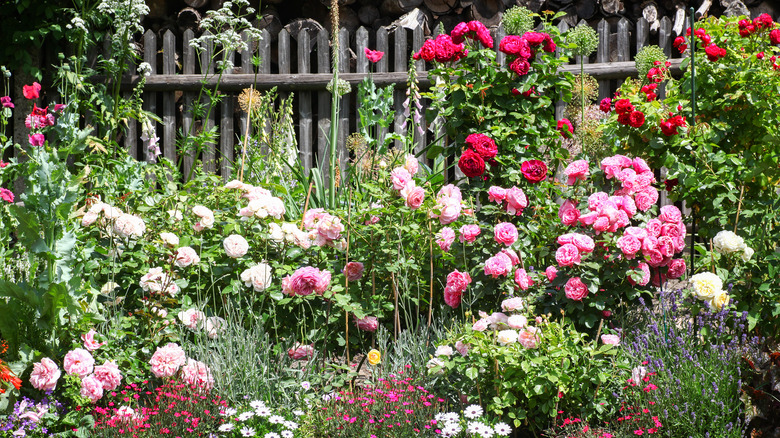Mistakes Everyone Makes When Planting Poppies
Those poppies, such bright spurts of color dotting your garden, come in so many colors, sizes, types, and in both annual (like Oriental poppies) and perennial (like Flanders or Field poppies) varieties (via The Morning Call). In fact, according to Thompson & Morgan, there are some 120 varieties, and the easiest to grow is the annual Flanders poppy, named in remembrance of soldiers who died in World War I. For those who want a poppy that comes back year after year, the Oriental variety features larger flowers.
Plant poppies in the spring (March through May) or autumn (August through October) — although those sowed in the spring may not fully blossom until the next summer. One of the great things about poppies is they are a pollinator plant, which will bring bees and butterflies into your yard all summer long.
Poppies are found in a variety of settings. You might hear the flower's name and picture those high-stemmed Oriental poppies dotting an English cottage's border garden with lovely pastel and coral colors. You might envision a meadow full of red Flanders poppies bending in the wind. You might even want some other hues, say maroon, beige, or dark pink for the pots that dot your backyard, according to Growing with Plants. Whatever you choose, though, keep in mind there are some rules when planting poppies.
Don't bury your poppy seeds too deep
You can plant poppies from starter sets available in nurseries or grow them from seed packets. Whichever route you choose, make sure you wait until the soil warms a bit; look for temperatures of 65 to 75 degrees Fahrenheit, according to Growing in the Garden. Pre-grown poppies are easier to install, but more expensive, while seeds need some TLC to flourish. First, you'll put a few seeds on the dirt — poppies require light for germination so adding additional soil isn't needed — and make sure they are securely attached to the ground.
A better method is pressing your hand down on the seeds to ensure the dirt touches them without burying them. You should cover the seeds with a material that keeps the area moist but also allows light in, according to Ravalli Republic, who recommends using old row cover scraps. The cover helps the poppies grow since it encourages soil moisture without becoming too wet and keeps birds and mice away. It is essential for poppy seeds to stay hydrated; dryness discourages germination. During this stage, you should water lightly daily. Once the plants become an inch tall you may remove the cover.
Poppies grow quickly once seedlings appear — and can show blooms after two months from a March planting, according to Growing with Plants.
Don't let your poppies become diseased
Like many plants, poppies can fall prey to disease. If you see the leaves infested with yellow, red, or brown spots and gray, purplish, or brown spore collections on the leave's undersides, your blooms might have downy mildew, according to SFGate. Poppies can also get something called gray mold, also known as Botrytis blight, and caused by a fungus, Botrytis cinerea. This hits the flowers, stems, leaves, and buds and is especially found during dank and wet weather. As the condition progresses, gray spores will appear. Avoid these situations by spacing poppies far enough apart when planting. That will provide optimal air circulation. Not watering in the evening and allowing the moisture to hit the soil, not the plant will also help keep your plant healthy (via Burpee). You also want to avoid watering poppy plants from overhead.
If you see one plant is infected, remove it before the disease spreads to others. It is also imperative to maintain the space poppies live in by clearing away errant leaves on the ground and replacing the garden's mulch. Additionally, root rot is something else that can kill your poppy plants. This happens when soil moisture is high while fungal spores hit the plant. This makes the stem discolor and wilt, leaves die, and the roots blacken and break, according to Zombie Gardens. Drip irrigation, where the water is administered through soil or mulch directly and doesn't linger on the plants, can alleviate this issue.
Poor watering can kill your poppies
Just like the porridge in the "Goldilocks and the Three Bears" fairytale, you must water your poppies "just right." If you water too little, the poppies leaves will wilt, turn brown or yellow, and drop; water too much and the flowers' roots die, causing foliage to discolor and wither, according to SFGate. Overwatered poppies can also suffer fungal root or crown rots. Combat these problems by doing a light watering frequently rather than aggressive, occasional sessions. You should also be sure to plant in a space that also offers good drainage and add compost to prevent any problems.
Be sure that you pay special attention to poppies just developing. While the flowers weather droughts well, you still need to make sure they get enough water during dry conditions and heat waves. SFGate recommends using about an inch of water in the morning for general care, and to check on your new poppies to ensure moisture remains on a regular basis for four to six weeks when they are flourishing. Once established, poppies thrive with just a little H20. Too much will actually make them become too tall and ugly, as noted by Gardening Know How.
Don't deadhead your poppies at the wrong time
Taking care of your poppies allows them to flourish. For example, you want to deadhead them as they wither and the plant will produce more blooms. You also want to remove these dying flowers since poppies propagate — and you want to ensure that you don't get an unwanted collection of poppies that push out other plants (via Thompson Morgan).
To deadhead, you simply detach the flower stem just underneath where the dead blossom sits, leaving the remaining healthy leaves, according to Bob Vila. To do this you can use a tool like garden shears or merely your fingers. You'll want to ensure any seedpods that have appeared behind the dead bloom are removed as well; you may cut the stem off as well.
If you want the poppies to self-sow, however, do not deadhead — you'll also need to brace yourself to see some yellowed plants in your garden, according to Growing with Plants. The benefit to this is next year you'll see lots of self-seeded poppies blooming without much work from you.
Don't forget to collect the seeds
Finally, you can collect the seed pods and store them for the future (up to two years). Just wait until pods become light brown, cut them from the plant, and dry them out for a week or two before breaking them open and putting the seeds into a jar. After you gather all the seed, you can remove the remaining plant for your garden and turn it into compost.
Biennial and perennial varieties of poppy might not need seed gathering, but you can trim the foliage to ground level come autumn, per Thompson Morgan. Poppies are lovely and once you have developed them in your garden, and they can come back year after year. Best of all they grow almost anywhere, from creating a bright foliage that rims your garden to accenting spaces with large, tissue-paper think flowers or providing a nice arrangement in a pot that looks carefree and a bit wild but beautiful.

